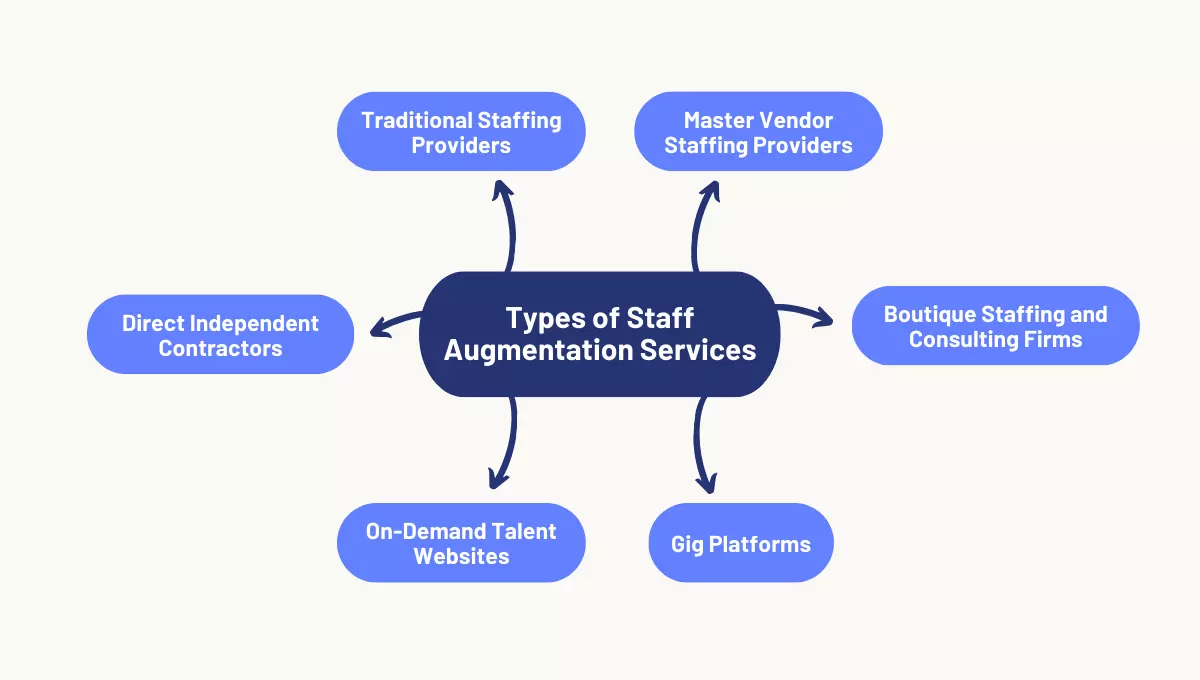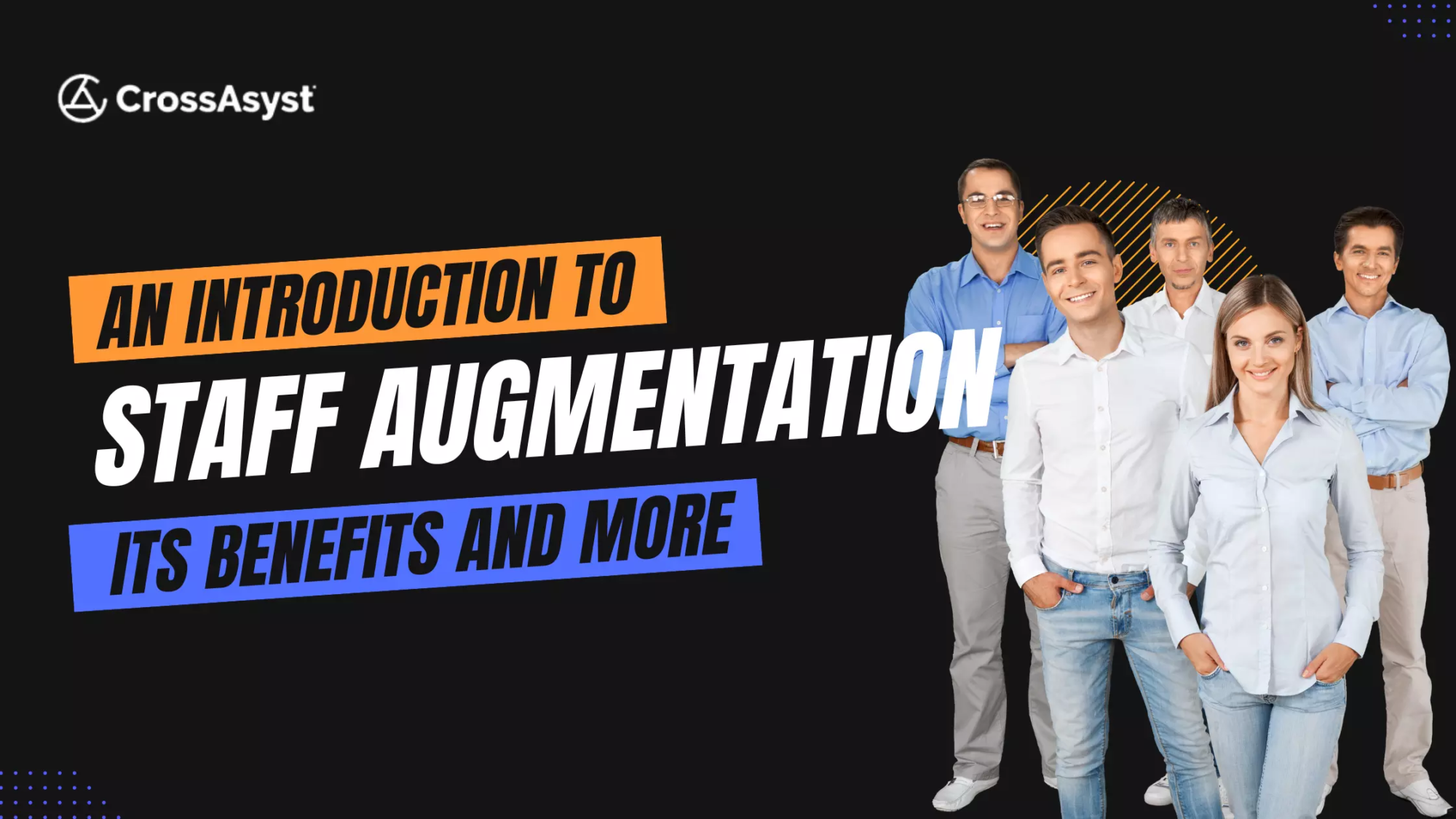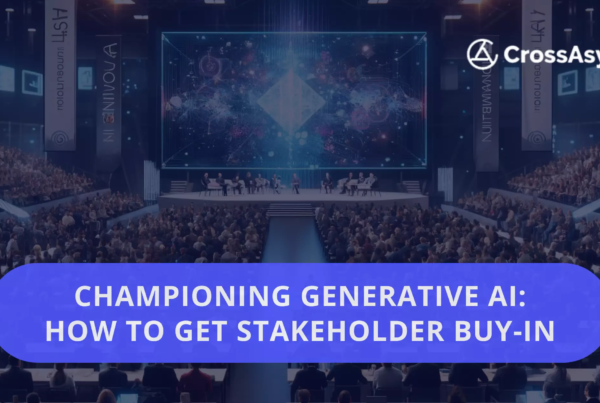It isn’t uncommon for organizations to find themselves in a position where they have an amazing product to build, but for various reasons, are falling short of skilled resources to work on it.
A quick and easy way for businesses to address such situations is staff augmentation. Here’s a quick introduction to what staff augmentation is, how it works, its benefits and more.
Table of Contents
What is Staff Augmentation?
Staff augmentation refers to the practice of strategically supplementing an organization’s existing workforce with external talent to fulfill specific skill gaps or project requirements. It offers a flexible alternative to traditional hiring models, enabling businesses to scale their operations efficiently while maintaining cost-effectiveness.
The concept of staff augmentation has evolved significantly over the years, driven by the need for agility and specialization in the workforce. Initially conceived as a temporary staffing solution, it has now evolved into a strategic workforce management approach embraced by enterprises across various industries.
Importance of Staff Augmentation
In today’s volatile business landscape, organizations face a multitude of challenges, including fluctuating market demands, technological advancements, and talent shortages. Staff augmentation emerges as a viable solution to address these challenges by providing the flexibility and agility required to navigate through uncertainties.
One of the primary reasons for the growing importance of staff augmentation is its ability to provide access to specialized talent. In a highly competitive market, organizations often encounter difficulties in recruiting and retaining professionals with niche skill sets. Staff augmentation allows businesses to tap into a vast talent pool, encompassing diverse expertise and experience levels, without the constraints of traditional hiring processes.
Benefits of Staff Augmentation
Let’s explore the key advantages that make staff augmentation a game-changer for businesses worldwide.

Flexibility
Staff augmentation offers unparalleled flexibility, allowing organizations to scale their workforce up or down based on project requirements or market dynamics. Unlike traditional hiring models that involve long-term commitments, staff augmentation enables businesses to adapt swiftly to changing needs without incurring significant overhead costs.
Cost Effectiveness
Leveraging staff augmentation can lead to significant cost savings for organizations, especially when compared to the expenses associated with full-time hiring. By engaging external talent on a project basis, businesses can avoid expenses such as employee benefits, training, and overhead costs, thereby optimizing their operational expenditure.
Access to Specialized Talent
One of the most significant advantages of staff augmentation is its ability to provide access to specialized talent. Whether it’s technical expertise in emerging technologies or domain-specific knowledge, businesses can leverage staff augmentation to augment their existing workforce with professionals possessing the requisite skills and experience.
Control and Scalability
Staff augmentation offers businesses greater control over their workforce composition and allocation. Organizations can strategically augment their teams with resources tailored to specific project requirements, ensuring optimal resource utilization and project efficiency. Moreover, the scalability inherent in staff augmentation allows businesses to ramp up or down their workforce swiftly in response to changing demands, thereby enhancing operational agility.
Types of Staff Augmentation Services

There are multiple types of staff augmentation, each offering a unique approach to integrating external talent into existing frameworks. Here’s a closer look at these types.
Traditional Staffing Providers
Traditional staffing providers, such as recruitment agencies and job placement firms, have long been a cornerstone of the staff augmentation landscape. These firms specialize in sourcing, screening, and placing candidates across various industries and job functions, catering to the diverse needs of businesses.
Master Vendor Staffing Providers
Master vendor staffing providers act as centralized points of contact for managing multiple staffing vendors involved in a project. They streamline the staffing process, coordinate candidate selection, and ensure consistency in service delivery, thereby optimizing efficiency and reducing administrative burdens for businesses.
Boutique Staffing and Consulting Firms
Boutique staffing and consulting firms focus on niche markets or specialized skill sets, offering tailored staffing solutions to meet specific client requirements. These firms often have deep industry expertise and a robust network of professionals, enabling them to deliver customized staffing services with a high degree of precision and agility.
Gig Platforms
Gig platforms, such as Upwork, Freelancer, and Toptal, have emerged as popular destinations for businesses seeking on-demand talent for short-term projects or specialized tasks. These platforms connect businesses with independent contractors and freelancers from around the world, offering flexibility, scalability, and cost-effectiveness.
On-Demand Talent Websites
On-demand talent websites, such as Fiverr and TaskRabbit, cater to businesses and individuals looking for quick, one-off tasks or micro-jobs. These platforms offer a diverse range of services across various categories, allowing businesses to access specialized expertise on a per-task basis.
Direct Independent Contractors
Businesses can also engage independent contractors directly for specific projects or roles, bypassing intermediaries such as staffing agencies or platforms. This approach offers greater control and flexibility in talent management, albeit with added responsibilities for client-side administration and compliance.
How Staff Augmentation Works
Understanding how staff augmentation works goes a long way in helping organizations unlock greater agility, efficiency and scalability. Let’s dive into it.
Assess Organizational Needs
The initial step involves evaluating the software development requirements of the organization. This entails conducting a thorough analysis of skill gaps, project timelines, budget constraints, and resource availability.
By identifying areas where additional expertise is required, organizations can determine the scope of external talent needed for successful project execution.
Source Talent
Once the specific needs are identified, the focus shifts to sourcing the right talent to fill these gaps. This may entail collaborating with staffing agencies specializing in software development, exploring online talent platforms catering to tech professionals, or leveraging professional networks to identify suitable candidates possessing the requisite skills and experience.
Onboard Talent
Upon selecting suitable candidates, the onboarding process commences. This involves integrating external talent seamlessly into the organization’s existing project teams. To facilitate a smooth transition, augmented staff members are provided with necessary resources, tools, and support systems.
This may include orientation sessions, technical training programs, and access to project documentation and collaboration tools to ensure they are well-equipped to contribute effectively to the project.
Monitor and Support Talent
Throughout the duration of the engagement, it’s crucial to monitor the performance and progress of augmented staff members closely. Regular check-ins, performance evaluations, and feedback sessions are conducted to ensure alignment with project objectives and organizational expectations.
Additionally, ongoing support is provided to address any challenges or concerns that may arise, fostering a collaborative and productive working environment.
Conclusion
With over a decade of experience in custom service development, CrossAsyst is perfectly poised to offer boutique staffing and consulting services. Here is a quick overview of the skill sets on offer, designations our resources are best suited for and the business verticals we service.
Skill Sets:
- Java
- Springboot Microservices
- Angular
- React
- .NET
Designations:
Our resources come with between one and ten years of experience, and are best suited for the following roles across Engineering, DevOps and Test Automation.
- Junior Engineer
- Engineer
- Senior Engineer
- Lead Engineer
Business Verticals:
CrossAsyst has extensive experience in the field of healthcare software development. However, our talent pool has the expertise needed to support software development and IT as well within the scope of the techstack mentioned above.
Want more details about our staff augmentation services? Book an appointment with our team now!




